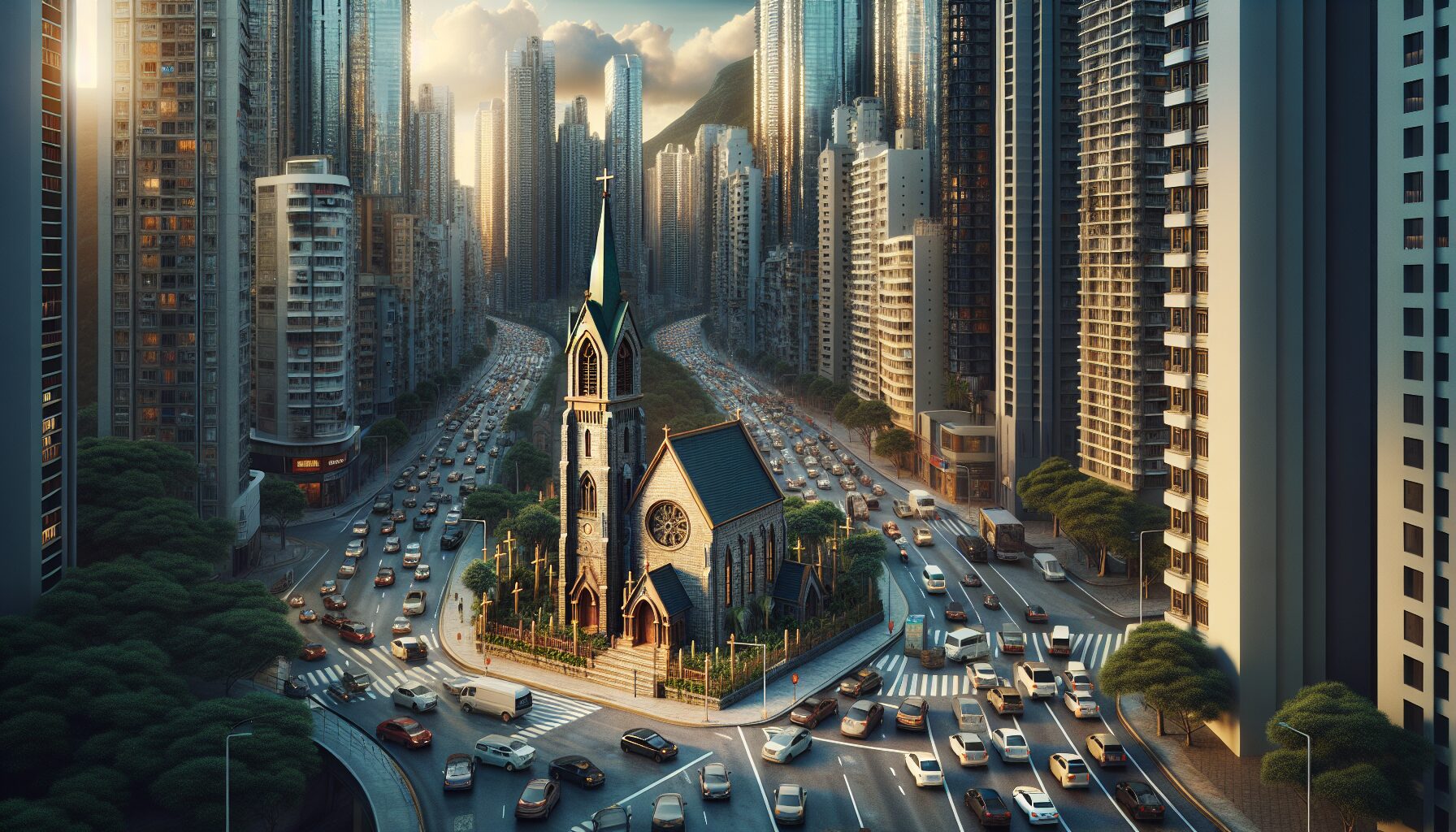Cities are often seen as bustling hubs of activity, brimming with towering skyscrapers, busy streets, and endless opportunities. Yet, within these concrete jungles lie hidden sanctuaries that offer moments of peace and reflection. Among these secret urban spaces, hidden chapels stand out as remarkable shelters from the city’s constant hum. These sacred spaces, often tucked away in the most unsuspecting corners, provide both spiritual solace and aesthetic delight.
The Allure of Secret Urban Spaces
The charm of secret urban spaces lies in their duality. They are both visible and invisible, tangible yet ethereal. Hidden chapels exemplify this paradox with their clandestine existence—open to those who know where to look, yet concealed from the unobservant eye. As urban environments grow increasingly crowded, these spaces offer a refuge, fostering a deeper connection to oneself and even the divine.
“The more hidden a sacred place, the more powerful it feels.” – Anonymous Urban Explorer
Historical Significance of Hidden Chapels
Historically, many hidden chapels emerged in response to political or religious strife. During times of persecution, such as the Reformation in Europe, clandestine chapels provided a safe haven for those wishing to practice their faith in secrecy. These spaces often feature discreet architecture and hidden entrances, contributing to their secretive allure.
For instance, the Our Lord in the Attic in Amsterdam, a clandestine church built during the 1660s, is hidden within the upper floors of a canal house. Built during the Protestant Reformation, it allowed Catholic worshippers to practice away from the eyes of the authorities.
The Modern-Day Pilgrimage
The appeal of these secret chapels extends beyond their religious significance. They have become destinations for modern-day pilgrims—urban explorers seeking a journey rather than a destination. Each visit to a hidden chapel becomes a personal odyssey, a step away from the mundane into a world of history, spirituality, and peace.
- Finding Solace: Hidden chapels offer a space for introspection, meditation, and connection. Whether you seek spiritual insight or simply a quiet place to gather your thoughts, these spaces provide a rare opportunity for contemplation.
- Aesthetics and Design: Despite their discreet exteriors, many hidden chapels boast magnificent interiors. Ornate decorations, intricate stained glass, and symbolic artwork often adorn these secret spaces, offering a visual feast for visitors.
- Architectural Marvels: Ranging from minimalist designs to elaborate edifices, hidden chapels showcase architectural innovation and adaptation. The juxtaposition of their humble facades with lavish interiors often leaves visitors in awe.
The Role of Hidden Chapels in Community
Beyond personal solace, hidden chapels often serve as quiet anchors within their communities. These secret spaces may host small gatherings, provide shelter for the homeless, or act as venues for community events. In a world that constantly changes, these chapels remain steadfast, offering a sense of stability and continuity.
“In the shelter of each other, we live.” – Irish Proverb
The community role of these chapels underscores the idea that sacredness isn’t solely bound to religious activities but extends to social and communal engagements.
Popular Hidden Chapels Around the World
To uncover the essence of hidden chapels, one must embark on a journey across the globe, discovering the unique narratives each one tells.
- The Catacombs of Paris: Known for their mysterious aura, these catacombs host hidden chapels, etched into the labyrinthine passages beneath the city.
- St. Martin’s Chapel, London: Tucked away under Trafalgar Square, this chapel is a testament to the undiscovered spaces that lie beneath iconic public areas.
- Chiesa di San Bernardino alle Ossa, Milan: Famous for its macabre chapel adorned with skulls and bones, it offers a poignant reminder of mortality nestled inconspicuously in the city’s treasures.
- Capela do Senhor da Pedra, Portugal: Seemingly isolated, this coastal chapel stands on a rock formation, often hidden by crashing waves but revealing itself as the tide recedes.
The Future of Secret Urban Spaces
As cities continue to expand and urban landscapes evolve, the future of hidden chapels and similar secret spaces remains a topic of intrigue. Urban planning increasingly recognizes the need to integrate green spaces and quiet zones into chaotic cityscapes. There’s a growing appreciation for the preservation of these chapels as cultural and historical landmarks.
Technological advancements like augmented reality may soon offer more immersive ways to experience these hidden gems, allowing broader accessibility while maintaining the mystery and magic they possess.
“Preserving the mystery is as important as revealing the history.” – Urban Planner
A Final Reflection
The hidden chapel remains a spiritual oasis amidst our ever-busy urban landscapes. In seeking these secret urban spaces, we are reminded of the importance of preserving places of reflection and tranquility. These chapels not only enrich the architectural tapestry of our cities but also hold profound meanings and stories, bridging the past with the present and offering a hopeful glance into the future.
Let us cherish these hidden sanctuaries, not merely as relics of the past but as living, breathing embodiments of humanity’s enduring quest for peace and understanding within the chaos of modern life.

Comments